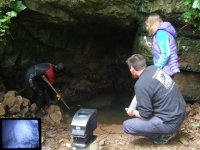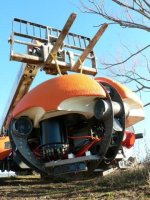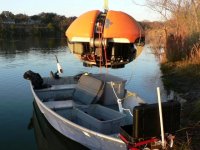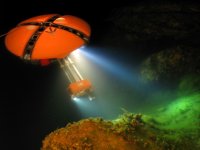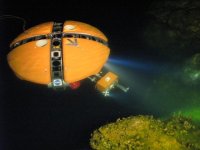Yep,
Something similar was used during the exploration of the Doux de Coly in France in 1998 - but only as a 'support' tool to watch Olivier Isler and his support divers during Olivier's long decompression in the shaft some 400m from the entrance.
The main problem with an ROV in underwater caves is the cable that controls its movements and sends back images. As you can imagine, getting 400m of cable into the cave took some man-power as the ROV cannot drag it through winding horizontal galleries. Once in the shaft, another problem was the ROV getting its cable tangled with other equipment and being unable to sort itself out.
Some amusment was had by Dave Ryall (CDG) during the removal of the cable from the cave. He was tasked with swimming out whilst ensuring the cable end did not get snagged and damaged on the corners as it was pulled out. Dave manfully flippered along as quick as he could until the cable began going faster and faster. Eventually being pulled along in an ever more hazardous nature - nearly getting tanks, lights, regulators ripped off - he just had to let go.
On surfacing he discovered the increase in speed had been because they had fastened the cable to a car and driven it off down the valley!
So, yes, cave diving can be dangerous.....(tee-hee!)
Incidentally, I believe that an ROV has also been used down to 300+m depth in the mainly vertical Fontaine de Vaucluse, though again cable tangles proved a problem during its recovery. Somehere on t'Inteweb, I am sure you can find details of this.
Best Regards
Scoff
CDG



